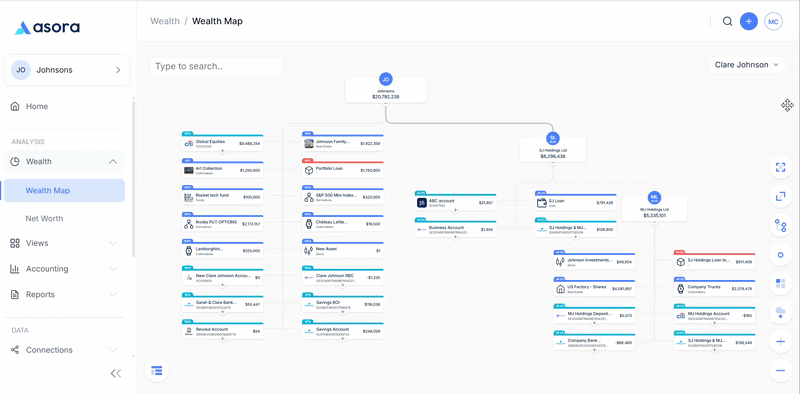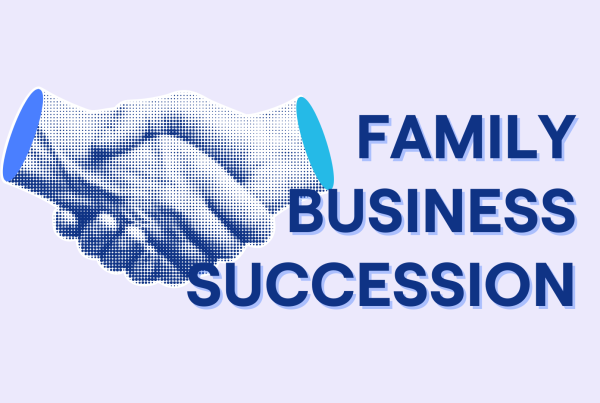TL;DR
A family constitution is a nonbinding governance document that captures the family’s mission, core values, and guiding principles, then turns them into guidelines and processes for making decisions across your family office, family business, trusts, and philanthropy. It fosters family harmony by defining roles, responsibilities, and processes, ensuring that succession planning, ownership, and meetings operate within an agreed-upon framework rather than being influenced by individual personalities. Asora provides a platform that helps the entire family create a living document, organize it, and operationalize it through workflows, approvals, and reporting that reflect the constitution in day-to-day life and wealth management, drawing on family constitution examples where helpful.
Introduction
A family constitution is the family’s shared set of rules governing its operations and activities. It records history, beliefs, and the family’s mission, then outlines how members participate in decisions that affect wealth, business, and the broader family enterprise. Many advisors describe it as a charter or protocol because it is a valuable tool for translating culture into practice. It typically covers who is considered family for governance purposes, how the family council operates, which topics are referred to a board or committee, and how policies on employment, distributions, philanthropy, and conflict resolution are applied across companies and assets, as illustrated by a family constitution example. The constitution is typically nonbinding at law and sits alongside binding instruments such as shareholder agreements and trust deeds, which continue to govern ownership and legal enforceability. The constitution’s purpose is to align people and processes so that the legal documents work with the family’s intent rather than against it.
Families with a family business, a growing investment company, or a multi-entity structure find that creating a family constitution provides a sense of order. As children grow and one generation gives rise to several, the number of perspectives increases. Without agreed-upon guidelines, owners who are not actively involved in management, spouses and in-laws with legitimate interests, and next-generation leaders who want to contribute can pull in different directions. Governance writing on family enterprises emphasizes how constitutions facilitate the family’s natural expansion by clarifying expectations and codifying the decision-making process.

Asora’s platform transforms the family constitution from a static document into an active governance system with structured workflows and real-time visibility.
Why Family Offices Benefit
The central benefit is clarity. A constitution outlines the process by which decisions are made, ensuring that everyone understands where a proposal belongs within the system, such as with the family council, the investment committee, or the board, and when the board should decide. This clarity is especially important in a family setting where multiple generations share ownership and roles.” Clarity reduces delay and avoids the informal lobbying that breeds frustration and conflict. Practitioners repeatedly note that constitutions are most effective when they embed practical thresholds and procedures, rather than relying solely on aspirational statements.
The second benefit is continuity. Succession planning becomes a process rather than a moment because the constitution sets qualification pathways for family employment, outlines mentoring and transition timelines, and defines interim arrangements when a principal steps back. The result is less scrambling and more confidence across leaders, owners, and employees.
The third benefit is cohesion. Families often say they want both performance and family harmony. A constitution strengthens culture by writing down the family’s values, shared purpose, and standards of behavior, then linking those principles to the way meetings are run, how information is shared, and how interest conflicts are handled. This maintains relationships even when opinions differ, which in turn protects the company’s reputation and long-term success, as well as that of the wider family enterprise.
A fourth benefit is consistency across borders. Many family-owned businesses operate across jurisdictions. The constitution provides a policy layer that sits above local differences and guides the alignment of legal documents in each place. Families with cross-border wealth need that framework to balance tax, regulatory, and cultural considerations with the family’s own rules and ideals.
What Goes Into the Constitution of Family Governance
Strong family constitutions are bespoke and written in the family’s own voice. They begin by setting context, capturing the family’s history and purpose, articulating the family’s mission, and naming the core values that shape their behavior. From there, the document makes governance practical. It then assigns decision rights by topic, so members know who leads on investment allocation, distributions, capital calls, leverage, exits, and other extraordinary transactions, and when an issue should be escalated to the board, much like many family constitution examples show. It defines who is included for governance purposes, clarifies the status of spouses and in-laws, and explains how the family council and family assembly operate in practice, including the frequency of meetings, quorum, and voting procedures.
A well-crafted constitution also addresses participation. It sets fair and transparent rules for family employment in the business or family office, including eligibility, development, and performance expectations, so that children and future generations have a clear pathway while the enterprise maintains professional standards. Ownership principles and a thoughtful liquidity plan are in place, providing owners with confidence in how transfers, buybacks, or exits will be handled. Because disagreements are inevitable, the constitution outlines a predictable process for resolving conflicts that protects relationships. Finally, it fosters a review rhythm, allowing the text to remain a living document that evolves as the family changes. Advisory guidance consistently emphasizes that, while a constitution is not legally enforceable on its own, it should be deliberately aligned with binding instruments, such as shareholder agreements and trust deeds, ensuring that law and practice reinforce one another.
Family Constitution or Family Charter
The terms are often used interchangeably. A charter tends to emphasize values and culture and may be adopted early to start conversations about principles and expectations. A family business constitution typically goes further by codifying the structure, decision-making rights, and processes that guide leadership, ownership, and risk management. Both documents aim to make governance explicit, and both can succeed when they are written with the family’s voice and reviewed regularly. Many families begin with a charter and expand it into a fuller constitution as complexity grows and more generations and entities become involved.
How to Create a Family Constitution that Works
The most effective constitutions come from a thoughtful process rather than a rushed template. Families begin by mapping what already exists. This includes boards, trustees, committees, mandates, and the meeting schedule. That map becomes the foundation for creating a family constitution that complements the legal framework rather than contradicting it. Families then convene structured conversations (often facilitated by an independent advisor) to articulate values, priorities, and non-negotiables, and to clarify the responsibilities of owners, managers, and the rest of the family.

Example of a family wealth map created in Asora, illustrating how assets, entities, and governance structures connect under a family constitution.
A first draft translates those agreements into governance bodies, voting rules, decision thresholds, participation criteria, and dispute resolution steps. The draft is tested in scenarios that mirror real-life situations, such as a liquidity event, a leadership transition, or a significant acquisition, which reveals where the rules need refinement. Counsel then aligns shareholder agreements, trust deeds, and operating agreements with the constitution’s intent to ensure that enforceable documents and guiding principles work together effectively. Finally, the constitution is published in a secure environment, education sessions bring members up to speed, and a review cadence is established so that the document remains active. Practitioners and legal commentators agree on the non-binding nature of these documents and the importance of keeping them flexible while grounded in governance discipline.
Where Asora Fits
Asora is a platform partner that helps affluent families establish, store, and implement their own constitution. In practice, your document resides in Asora’s secure repository, with access controls. Workflows translate rules into action. If the constitution requires certain investments to be approved by a family council or a supermajority of owners, Asora routes proposals by sharing the proposal document in-platform and records decisions as linked notes or documents. Aggregation across banking, investments, private equity, real estate, and other private assets informs reporting, ensuring governance decisions are based on real data and policies remain central to day-to-day management. With mobile access and strong authentication, principals and next-generation members can participate from anywhere. The result is a living framework that moves from concept to daily practice across generations.

Asora aggregates data across banking, investments, and private assets, providing a single source of truth for governance and reporting.
When to Start
The best time to begin is before a breaking point. Families often accelerate the process ahead of succession, a sale of a legacy asset, a change in ownership, or the onboarding of new family members into governance. Cross-border moves, the establishment of new entities, and philanthropic expansions are also natural triggers for these changes. A constitution established during calm periods enhances meetings during busy seasons and moderates the emotional temperature when difficult choices arise.
Guidance from family business bodies and advisors points to the same conclusion. A tailored framework, regularly reviewed, is crucial for preserving unity and making informed decisions as the family and the enterprise evolve. If you are still exploring structure, it can help to review a few family constitution samples first, then tailor the framework to your own governance needs.
Conclusion
A family constitution is the simplest way to turn values into reliable governance. It clarifies who leads, who makes decisions, and how disputes are handled, and it protects both relationships and performance as life becomes increasingly complex. It provides future generations with a shared language for responsibility and respect, and it offers owners and leaders a framework for decision-making that can endure across multiple generations.
Asora supports families by providing the digital platform and expert support needed to create, organize, and operate a constitution that aligns with the family’s culture and the realities of the business. If you want to see how your constitution can become an operational asset rather than a static document, book an Asora walkthrough today.
FAQs
What is a family constitution?
A family constitution is a nonbinding document that expresses a family’s values, principles, and rules for governance and then connects those rules to practical processes for making decisions about wealth, companies, and shared interests. It complements legally enforceable documents by offering guidance that keeps everyone aligned around the plan.
Is a family constitution legally enforceable?
Most constitutions are not legally binding. Enforceability is maintained in shareholder agreements, operating agreements, and trust deeds, while the constitution provides the framework that helps members act consistently. Families often seek counsel to align these legal documents with the Constitution, ensuring that their practices and laws are mutually supportive.
How is a family business constitution different from a charter?
A charter often explains purpose and culture, while a family business constitution usually adds structure for governance, ownership, employment, and dispute resolution. Many families adopt a charter first and then develop a fuller constitution as the enterprise and generations expand.
When should we start creating a family constitution?
Begin when the family is calm, and the process can be thoughtful. Triggers include leadership transitions, a significant liquidity event, cross-border expansion, or when more members become owners. Starting early preserves harmony and makes succession planning smoother for the future.
How does Asora assist in creating and implementing the constitution?
Asora provides the platform and expert support to help families establish their governance documents, keep them securely organized, and implement their rules with workflows, tasks, alerts, and approvals. The platform aggregates data from banks, investments, and private assets, delivering transparent reporting that informs governance decisions with real information, ensuring the constitution remains a living document in day-to-day family office management.



